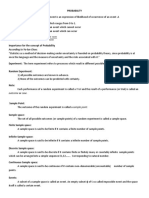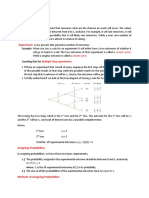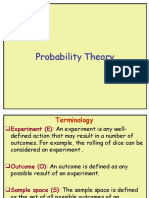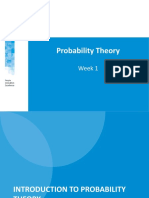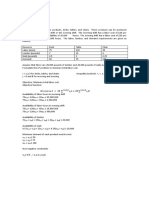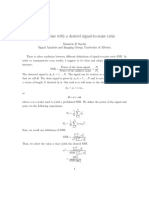0% found this document useful (0 votes)
47 views2 pagesSummary (-) Probabilities LS & GS
The document outlines fundamental concepts of probability, including random experiments, sample spaces, events, and their classifications such as certain and impossible events. It discusses conditional probability, independent and dependent events, and introduces tree diagrams for visualizing probabilities. Additionally, it provides formulas for calculating probabilities based on selected elements and emphasizes the importance of the total probability rule.
Uploaded by
nourhanshaaban422Copyright
© © All Rights Reserved
We take content rights seriously. If you suspect this is your content, claim it here.
Available Formats
Download as PDF, TXT or read online on Scribd
0% found this document useful (0 votes)
47 views2 pagesSummary (-) Probabilities LS & GS
The document outlines fundamental concepts of probability, including random experiments, sample spaces, events, and their classifications such as certain and impossible events. It discusses conditional probability, independent and dependent events, and introduces tree diagrams for visualizing probabilities. Additionally, it provides formulas for calculating probabilities based on selected elements and emphasizes the importance of the total probability rule.
Uploaded by
nourhanshaaban422Copyright
© © All Rights Reserved
We take content rights seriously. If you suspect this is your content, claim it here.
Available Formats
Download as PDF, TXT or read online on Scribd
/ 2

